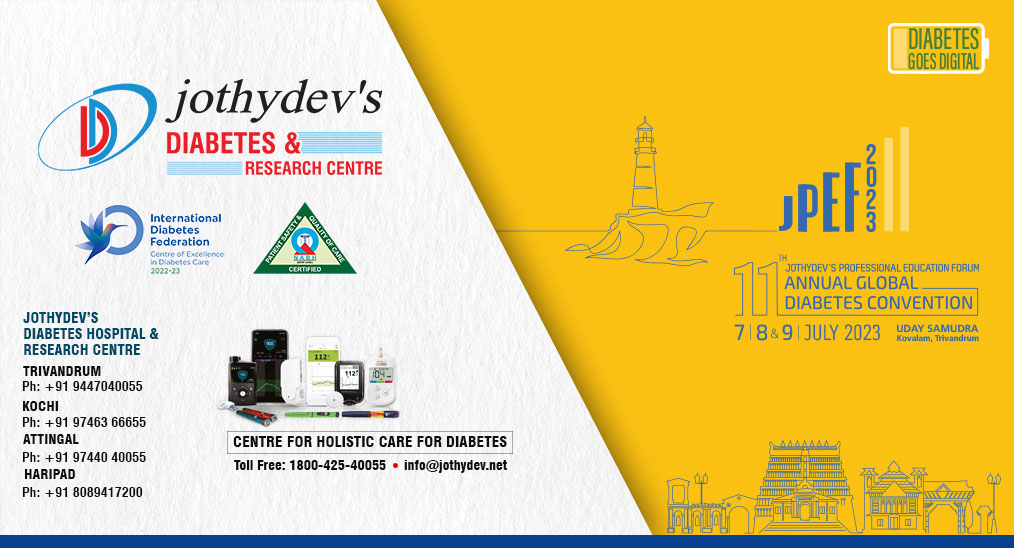2. Efficacy of Hyperbaric Oxygen Therapy as an Adjuvant in Managing Diabetic Foot Ulcers

This study was presented at the 11th JPEF Annual Diabetes Convention organized by Jothydev’s Diabetes Research Centre in Trivandrum and received the second prize among oral presentations.
Diabetic foot ulcer (DFU) is a significant problem in day-to-day medical practice, with about 10-15% of moderate and 50% of severe diabetic foot infections (DFI) complicated by osteomyelitis (OM). Hyperbaric Oxygen Therapy (HBOT) has been used as an effective adjunctive treatment for diabetic foot ulcers/infections. HBOT improves wound tissue hypoxia, enhances perfusion, reduces edema, and promotes fibroblast proliferation, collagen production, and angiogenesis. This observational study aimed to understand the efficacy of Hyperbaric Oxygen Therapy (HBOT) as an adjuvant along with conventional methods in treating DFU.
The study was conducted between January 2022 and December 2022, followed by a follow-up period of 6 months to 1 year. Necessary ethical clearance was obtained (Study Approval Reference No: SUT/IECHSR/ 2022-010). After obtaining informed consent from the participants, they were subjected to HBOT. Pre and post-analysis of digital photographs of ulcers and transcutaneous oxygen (TCPO2) levels of the patients were also conducted. The data was analyzed using SPSS 16.
Among the 111 patients (N = 111), 34.6% of patients had a history of past ulcers, and 17.1% had a history of past amputation. 43.8% of patients had diabetes for more than 20 years, while 32.6% had HbA1c levels > 10%. 42.4% of patients had peripheral arterial occlusive disease (POAD), and 14.2% had chronic kidney disease (CKD). The majority of cases were trophic diabetic ulcers (20.5%), followed by ulcers due to diabetes and POAD (18.9%). Osteomyelitis was present in 16.8% of patients, while 3.6% of patients presented with Charcot’s foot. Most patients presented with Wagner’s Stage II lesions (54.9%), followed by Stage III lesions (17.3%). Out of the 111 patients who received HBOT, 51.2% of patients were completely healed, and 27.8% showed partial healing. Pre and post-HBOT TCPO2 levels were 56±6.1 and 66±2, respectively.
The study suggests that HBOT can be used as a safe and effective option as an adjuvant in managing chronic osteomyelitis in diabetic foot ulcers.
For enquiries info@jothydev.net.
Please visit: jothydev.net | research.jothydev.com | diabscreenkerala.net | jothydev.com/newsletter




